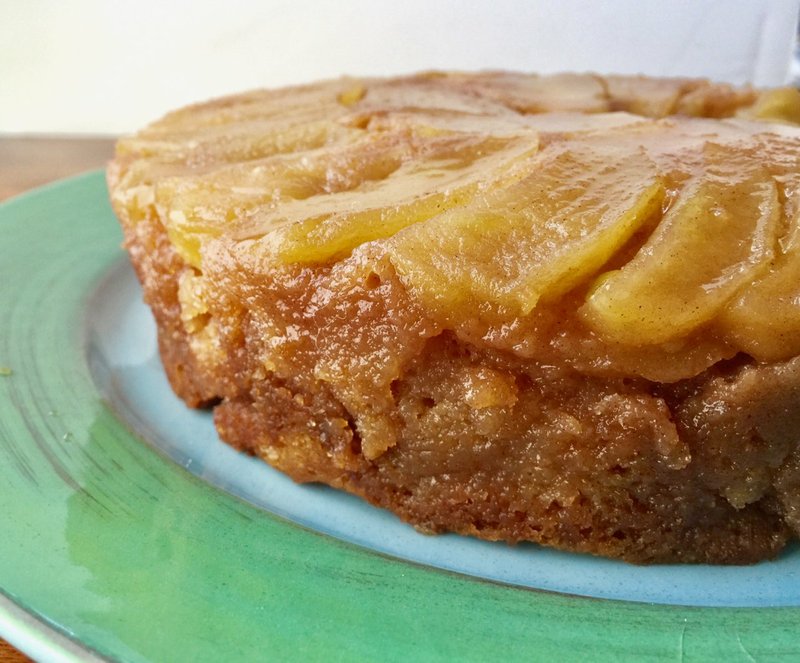When Apple: Recipes From the Orchard by James Rich (Hardie Grant, $29.99) arrived at the office, my first thought was, do I really need another apple cookbook? But then I opened it up for a look and within minutes I had found half a dozen recipes I wanted to try — Apple, Cheddar and Caramelized Onion Tart; Spicy Pork Chops With Cider Vinegar Sauce; Apple Bread; Apple Thyme and Cheddar Scones; Apple Syrup; Apple Membrillo — and that was just from leafing through the pages.
The book also includes an apple glossary showcasing 20 varieties — some familiar, most exotic — and explains their uses. The varieties are divided into categories of sweet, sharp, bittersweet and bittersharp.
Sweet apples, according to Rich, tend to have higher sugar and lower acid and are ideal for eating raw. Most varieties at the grocery store (Honeycrisp, gala, fuji, Red Delicious) are sweet.
Sharp apples are higher in acid. These apples are usually best enjoyed cooked. Granny Smith is a common example of a sharp apple.
Bittersweet and bittersharp apples are typically used for making hard cider.

As for what to make first, I finally settled on a maple-infused upside down cake. The recipe called for "self-raising flour" as it is called in the U.K., which I did not have. To adjust, I added some baking powder and a bit more salt as I normally would when I come across a recipe that calls for self-rising flour.
Well, it turns out U.K. self-raising flour and U.S. self-rising flour are not exactly the same. The Brits typically don't add salt to their self-raising flour, so my cake was a wee bit on the salty side. But I didn't mind as the extra salt complemented the apples and the caramel-like glaze.
Another key difference is the ratio of baking powder to flour. American self-rising flour typically has 1 ½ teaspoons baking powder per cup of flour. In the U.K., self-raising flour is made with 2 teaspoons baking powder per cup of flour.
But something went awry — the cake, though delicious, had an ever so slightly off flavor. A little soapy and a lot like baking soda. But I used less baking powder than what's typically in the U.K.'s self-raising flour. Upon further analysis, I think the ½ teaspoon baking soda, not the DIY self-leavening flour, was the culprit. Baking soda is used in combination with baking powder when an acid, such as buttermilk is present. This recipe lacked an acid, so the baking soda was unnecessary.
I've omitted the baking soda from the recipe below.
I used Granny Smiths, but any tarter-than-sweet apple will work, or even a combination of sweet and tart apples. The apples are lightly cooked in a mixture of butter, sugar, maple syrup and cinnamon which also bathes the cake in a delectable glaze that soaks into the crumb.
This cake is best served warm (Rich suggests with a scoop of vanilla ice cream), but it is also quite good at room temperature with a cup of coffee the next morning.
Maple and Apple Upside-Down Cake
For the apples:
5 tablespoons butter
Scant ½ cup granulated sugar
¼ cup maple syrup
½ teaspoon ground cinnamon
Pinch salt
4 Granny Smith apples, peeled, cored and cut into thick slices
For the cake:
¾ cup butter, softened
¾ cup granulated sugar
3 eggs
1 teaspoon vanilla extract
1 ½ cups self-rising flour (see note)
¼ teaspoon salt (see note)
3 tablespoons milk
Heat oven to 350 degrees. Coat the bottom and sides of a 9-inch cake pan with butter. Line the bottom with a round of parchment paper.
For the apples: In a medium saucepan, melt the butter over medium heat. Add the sugar and cook, stirring, until sugar dissolves and mixture is foamy. Stir in the maple syrup, cinnamon, salt and then the apples. Cook, stirring frequently, until the apples just begin to soften, about 5 minutes. Remove from heat and cool slightly.
Arrange apples in concentric circles in the bottom of the cake pan. Pour the maple glaze over the apples; set aside.
In a medium bowl, beat butter and sugar with an electric mixer until light and fluffy. Add the eggs, one at a time, beat on low until incorporated. Mix in the vanilla. Stir together flour and salt. Add flour mixture, a spoonful at a time, until well combined. Slowly drizzle in the milk and mix to form a light and creamy batter.
Spoon batter evenly over the apples, smoothing with a rubber spatula or the back of a spoon.
Bake 40 to 50 minutes, or until golden brown and a tester inserted near the center comes out clean.
Cool cake in pan for 10 to 20 minutes, then turn out onto a serving plate.
Makes 8 servings.
Note: If you don't have self-rising flour, sift together 1 ½ cups all-purpose flour and 2 ¼ teaspoons baking powder. Increase salt to ½ to 1 teaspoon.
Food on 09/18/2019

